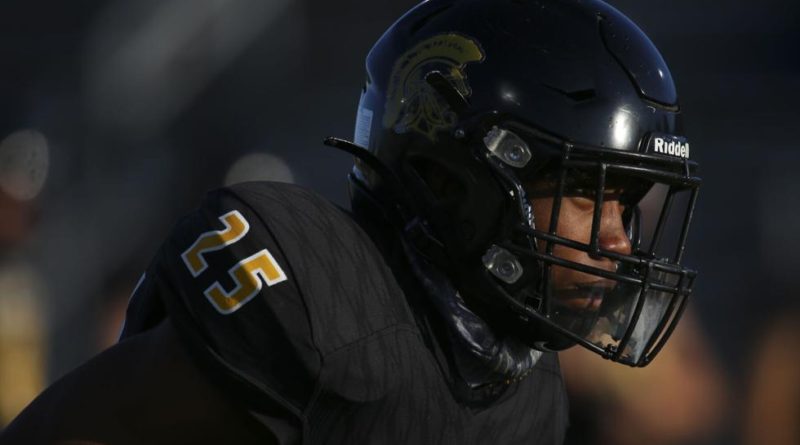Untracked: High school sports-specific COVID-19 exposures not tallied, reported | COVID-19
TRAVERSE CITY — Jason Carmien asks every competitor about their coronavirus screening protocols.
It’s just one thing he tries to do as the athletic director for Traverse City West Senior High School to keep students safe.
But information is hard to come by. There’s no official record of whether an opposing school team has had a COVID-19 exposure.
“We can’t control it, we can’t really track it, but it’s something we think about because safety is our utmost concern,” Carmien said.
The Michigan Department of Health and Human Services is not tracking data — nor do state health officials have any plans to publicly report such data — on coronavirus infections in high school sports.
Instead sports-related infections will be reported in the school outbreaks MDHHS discloses each Monday. The list won’t break out sports or sports teams, and already is catching critique because of the one- to two- week notification delay.
The lag time is a problem for many; a spokesperson to the Gov. Gretchen Whitmer said her office was reviewing the issue of “real-time” COVID-19 data for schools.
Athletic administrators and coaches say they overcome the systemic shortcoming by communicating.
Permitted, but not advised
On the same date Whitmer permitted contact sports statewide, MDHHS advised against participating in contact sports in a memo “Public Guidance for Participating in Contact Sports.” The document featured many public health measures already introduced by the Michigan High School Athletic Association and National Federation of State High School Associations (NFHS).
The department’s guidance said that while MDHHS does not have a system that compiles complete or real-time data on every outbreak in the state, “we are aware of at least 30 outbreak investigations conducted by local health departments in August that were related to sports teams, clubs, tournaments, or gyms.”
The data point on 30 outbreaks, which Whitmer stated in her executive order, left more questions than it answered for parents. The state’s ongoing COVID-19 outbreaks in youth sports listing only included one for the entire state at the time it was issued.
Asked for clarification on the locations of the 30 outbreaks, MDHHS spokesman Bob Wheaton said the department didn’t have any case numbers or locations to provide for any of the state’s outbreaks related to sports.
“The data shared in the order (30 outbreaks) was taken from the outbreaks that we were aware of through interaction with local health departments, but would not be expected to include every outbreak in these settings,” Wheaton said in an email.
“We provided data to explain the concern the department has with risk of exposure to COVID-19 in these settings, without violating privacy of individuals. At this time, we do not have a system that enables us to pull this routinely in a consistent manner,” Wheaton wrote.
The state spokesman could not provide a state official to discuss the matter further.
Swift changes
The department quietly updated its original document of guidance to its “Public Guidance for Contact Sports” viewable on the state’s coronavirus website.
It now reads: “In August, Michigan had more than 36 reported outbreaks associated with athletics clubs, teams or athletic facilities. The largest of those outbreaks included 27 affected individuals.”
(That included case numbers).
The original document was dated Sept. 3, citing the 30 unnamed outbreaks, while the updated document was dated Sept. 14. It appears, according to information included in a series of emails between a reporter and an MDHHS official, between Sept. 12, and Sept. 14, the state reported six new athletic related COVID-19 outbreaks that occurred in August.
Public health departments in Michigan are required to submit a SurveyMonkey form on COVID-19 outbreaks in schools by the end of each week, and the data is released Mondays.
The Record-Eagle filed Freedom of Information Act requests seeking data on the 30 outbreaks in the original order, and the data that led to MDHHS’ guidance against contact sports. The law requires MDHHS respond by Tuesday.
Assumptions and confusion
A lack of oversight at the government level is a concern to Karissa Niehoff, executive director of the NFHS, the nonprofit organization that writes the rules for modern youth sports.
She said she has only been made aware of COVID-19 infections in schools in other states by media reports.
But sports infections are a different animal, she said. She said the athlete who became infected and the sport in which it happened can become obvious when quarantines and isolations become recommended by public health departments.
“I do think that it would be appropriate for schools to be upfront, if there has been a particular case on a particular team so that competition decisions could be made that would require an adjustment,” Niehoff said.
Niehoff’s predictions came to a head this week when a Traverse City West Senior High School student athlete tested positive for COVID-19.
Early last week, Traverse City Area Public Schools sent a letter to parents and families of fall sports athletes to inform them a student athlete had tested positive for COVID-19.
The district has not yet begun in-person classes.
The letter to parents did not disclose the sport involved and Carmien said no changes were made to the Titans schedule going forward.
Cathey O’Connor, parent of two tennis players at TC Central, says knowing at least the sport would have been nice, but added the kids most likely already have that information. They notice who’s there and who’s not.
“The kids that are on that team, of whatever kid it is, they know,” O’Connor said. “I would just hope that what we’ve been hearing is true, it’s that the health department is in charge of notifying people. It’s going to be interesting to see how that plays out.”
Decision-makers need more information, Niehoff said.
“If we are letting kids play, then I think a part of that is the responsibility to communicate if someone might be unknowingly entering into a situation with some risk.”
That worry of an unknown risk is mutual, said Cody Inglis, assistant athletic director at the MHSAA and a former athletic director at Suttons Bay and Traverse City Central.
He expressed concern for athletic directors who schedule opponents with no real-time COVID-19 data on hand.
“It’s a challenge when the target’s moving each day and you don’t know how why or how it’s moving, it just moves,” Inglis said. “It just doesn’t make sense sometimes, but you’ve got to try to adjust with it.”
After all, as Dr. Joneigh Khaldun, Michigan’s chief medical executive said in Whitmer’s initial press release permitting organized sports, “Individuals can now choose whether or not to play organized sports.”
Working together
In conversations with the 51 athletic administrators across the nation, Niehoff said she has not yet heard of a situation where there’s proof COVID-19 spread from one person to another at a high school sporting activity.
“I think in the big picture, we all need to realize that when kids come back together, there will be COVID cases that are identified. They are large gatherings,” Niehoff said. “But we really don’t have enough data to say that playing sports is causing contagion at this time.”
Michigan was the 24th state in the U.S. to return to the football field Friday.
An estimated 35,000 student athletes across 600 schools took the turf, starting the season in week four. MHSAA requires students to be screened for COVID-19 symptoms, not tested.
By comparison, there are only 257 Division I college football programs in the nation. Conferences playing this fall implemented rigorous testing protocols — the Big 10 plans to test student athletes daily.
Athletic directors and coaches in the area don’t think it’s a matter of if COVID-19 outbreaks emerge in their programs, but when.
“It’s unrealistic to think that we won’t have some type of a positive case flare up with an athlete or within our school district,” said Fred Bryant, athletic director of Cadillac. “It’s going to happen. I just think it’s a matter of when and how we’re able to contain and how we’re able to track and trace.”




